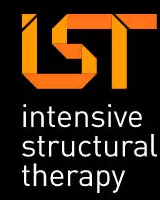Identification Of The Homeostatic Maintainer
I believe that one of the most useful assessment tools available to the family therapist is the concept of the homeostatic maintainer, the individuals or social forces that are maintaining a given problem and must therefore be included in the treatment.
The term homeostatic maintainer derives from the word homeostasis or same state. As used in biology or physiology, homeostatis refers to a process of maintaining sameness by restoring a system to a state from which it periodically departs. A classic example of a homeostatic mechanism is the thermotactic system in the human body. This system acts like a regulator to maintain body heat at a constant temperature to maximize efficiency both in cell reproduction and in interaction with the environment. As we know, however, there are times of crisis, such as infection or injury, when the critical function of the thermotactic system is to raise body temperature. During these periods, increased temperatures act to enhance the production of white blood cells and to destroy infecting agents. While the overall goal of the higher temperature is to improve bodily protection, if this excess heat is maintained for too long a period – if it becomes a new status quo – there can be deleterious side-effects. The homeostatic system, then, can prove either a positive or a negative force.
With a family crisis, there can be forces at work that act to maintain the status quo in a way that is detrimental to the system, by keeping the system from changing in the face of developmental pressures. It is this negative characteristic of homeostasis that makes it an important concept for family therapy. Like the body, the family system can include forces that keep it in a steady state that proves harmful because it prevents the family from adapting to developmental changes. The system either cannot allow a necessary increase in social “temperature” to deal with crisis, or it persists in crisis and cannot return to “normal” – to an everyday productive functioning.
A few years ago, the newspapers reported a story of a nineteen-year old man who had committed an armed robbery in a rural community. When his court-appointed attorney went to see him, the man pulled a knife and held the young woman prisoner for three days. Finally the man was apprehended and had his day in court. When, just before sentencing, the judge asked, “Is there anything you would like to say in your own behalf?” the man remained silent but gestured to his mother. The middle-aged mother then stood, pointed to the judge, and said, “How dare you treat my son like this! It’s not fair. He’s done nothing wrong.”
With just this brief story to go on, one can only guess about the true nature of the forces in the young man’s life that had buffered him from facing the consequences of his actions. But it is clear that even at this eleventh hour, in the face of overwhelming evidence of culpability, the mother refused to hold her son responsible and instead acted to maintain the status quo. This was a family system held fast in negative homeostatis, where productive change had not been allowed and where terrible dysfunction had come to be accepted as the norm.
The family therapist uses the concept of the homeostatic maintainer by attempting to render ineffective the family’s stereotyped, stable ways of responding. The first step for the therapist is to discover what is maintaining the problem – that is, the person or persons, who are encouraging the homeostasis – then distinguish a therapeutic unit that includes the homeostatic maintainer. The therapist must obviously demarcate the extent of the forces to be worked with – mother, father, grandparents, neighbours, teachers. As Francisco Varela (1976) points out, family systems can be like Chinese boxes: individuals are part of a family, which is part of an extended family, which is part of a community, and so forth. The job of the therapist is to identify and focus on the “box” that may hold the homeostatic maintainer and then treat this unit as the family system. The second step in the treatment process is for the therapist to disrupt the system and observe who attempts to return the system to its status quo. That person or social force is the homeostatic maintainer.
A very clear example of a family member functioning as a homeostatic maintainer is the father described in the chapter on delinquency in the book Treating Troubled Adolescents. Early in the session, when his wife was confronting their delinquent youngster (who had been caught the night before with some of her jewellery and an empty vial of cocaine), the father, by his passivity and solicitous concern for his son , continually undermined his wife’s efforts to have the boy respond to parental authority. He sat passively and stared at his son while his wife confronted the adolescent. By not joining with his wife in the confrontation, the father was implying approval and thus maintaining the dysfunctional pattern of the boy’s illegal behaviour.


